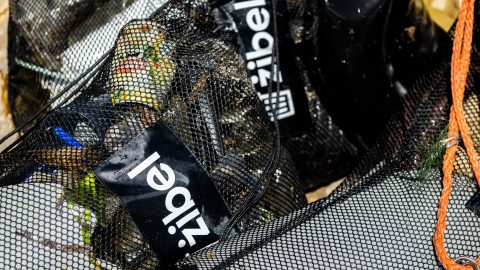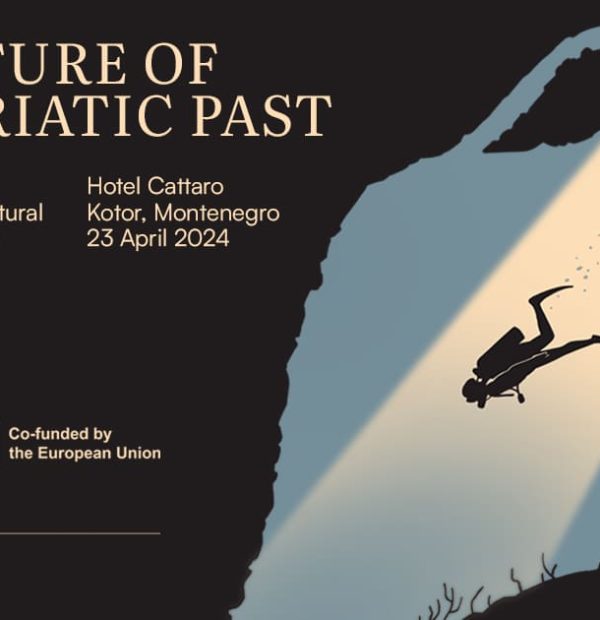Thursday, 16 May 2024
Menu

The find occurred in September near Hammershus Castle, which is located in the north-western part of the island.

Scientists hoped to discover fragments of ancient weapons at its bottom. “Peoples living in Scandinavia 1500-2500 years ago practiced the ritual destruction of weapons captured from invaders. Armaments were then thrown into lakes during ceremonies,” Professor Bartosz Kontny of the Faculty of Archaeology at the University of Warsaw, who led the research, tells PAP.
However, a few days’ examination of the lake bottom carried out in September this year surprised the scientists. For there were no ritually destroyed weapons there, but quite a large number of rubbish – bottles and cans, but also coins, a key or iron rods – equipment connected with the exploitation of the rocks by the lake and in the nearby quarry. And in the middle of the lake rested… a modern bathtub with a pole in place of its drain! However, there were several objects interesting from the archaeologists’ point of view, and they came from a much later period than scientists had anticipated.

“Close to the shoreline in the northern part of the reservoir, in an area of about 20 m, we found four medieval crossbow bolts from the 13th or 14th century. The interesting thing is that each of them has preserved wooden rays in their sleeves. This is a real rarity. The bolts were made in various types – both mounted with a sleeve and with a pin driven into the wood,” said Prof. Bartosz Contiñski. – Prof. Bartosz Kontny told PAP. Now the wood will undergo detailed analyses.
Scientists estimate that they have only surveyed a few percent of the lake bed. The reservoir measures about 700 metres long and 160 metres wide. The archaeologists used metal detectors for their work, with the water clarity being very good. Before diving, they measured the entire bottom with the help of sonar. Then they spotted a bathtub in the central part of the lake. “Initially we thought it was a tub, which means a boat made from a single log. So we were hoping for interesting finds from at least several hundred years ago” – recalls the archaeologist.

Scientists have also managed to locate two modern wrecks at the bottom of Hammersø. These are believed to be 19th century sailing vessels.
This is not the first underwater research by Polish archaeologists in Lake Hammersø. Last year, they found a late-medieval, massive spearhead (approx. 64 cm long and weighing over 1 kg), equipped with the so-called wings and whiskers. The researchers describe its state of preservation as very good.

Dr Kontny says that the lakes in Denmark (which also includes Bornholm) are terra incognita for archaeologists. “Almost no one dives in them, nor is archaeological research carried out in them. In recent years we have been the only ones who have looked into this issue,” – he adds.
PAP – Science in Poland, Szymon Zdziebłowski
Main photo: Bartosz Kontny










Welcome to DIVERS24.COM, your daily source of scuba news, freediving, scuba diving information, and equipment reviews. Our comprehensive coverage of the dive industry from A to Z provides you with all the latest scuba news, training updates, underwater photography tips, and everything else related to scuba diving. Whether you’re a beginner or an experienced diver looking for more knowledge about scuba gear or techniques – we’ve got it covered! With our in-depth articles written by experienced divers who have been there and done that, you are sure to find exactly what you need here at Divers24.com. Dive into scuba news today!
Underwater Media Sp. z o.o.
Szafarnia 11/F8,
80-755 Gdansk, Poland
Welcome to DIVERS24.COM, your daily source of scuba news, freediving, and scuba diving information. Sign in for a weekly news update and discount coupons for dive gear and apparel.
@2023 - underwatermedia.pl. All Right Reserved. Designed and Developed by Tworzenie stron internetowych Gdansk

The Divers24 portal is currently the largest online medium treating diving in Poland. Since 2010 we have been providing interesting and important information from Poland and around the world on all forms of diving and related activities.
Contact us: info@divers24.com